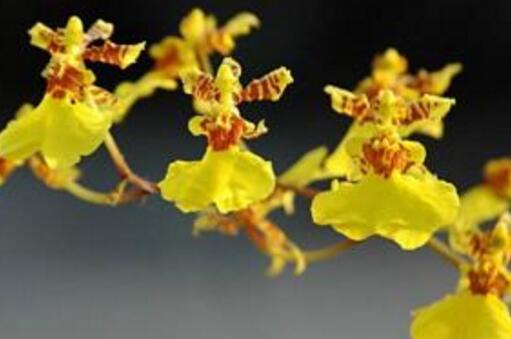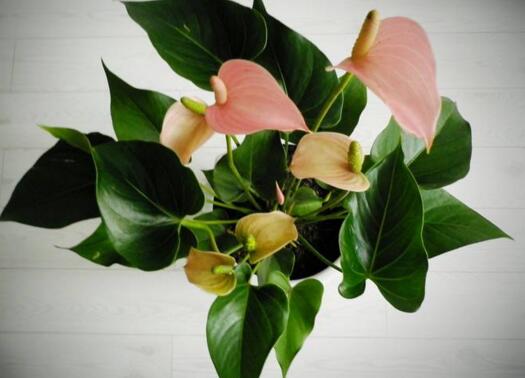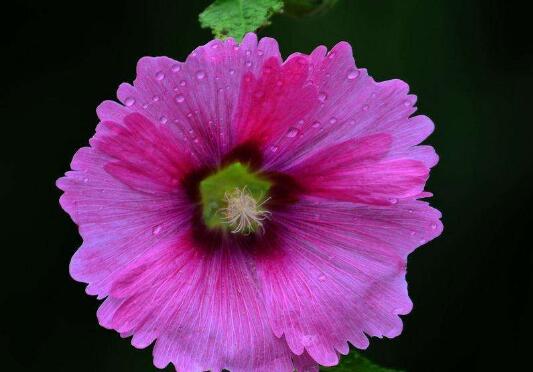How to propagate Oncidium, the propagation method / ramet or tissue culture of Oncidium can be used.
Oncidium is known as one of the five beauties in flower arrangement because its flowers are small and lovely and brightly colored, so how do we reproduce Oncidium after we have kept it for a period of time? This needs to follow its morphological characteristics to choose a reasonable way, and what are the breeding methods of Oncidium? The editor will tell you the answer.
How to reproduce Oncidium

Because Oncidium has false autumn stems, it usually uses two main propagation methods, namely, plant division and tissue culture, and less cutting or sowing. Among them, the propagation method of ramet is similar to that of freesia, but the maintenance and management in the later stage will be slightly different.
Propagation methods of Oncidium
1. Ramet propagation of Oncidium
1. Time. In order not to affect the flowering of Oncidium, ramet is usually carried out after flowering, the specific time is spring or autumn, flower friends in the north suggest spring, while the south can choose the ramet time according to the climatic environment.
2. Methods. How does Oncidium propagate when using ramets? After the Oncidium is molded, its root will have a seed plant, and there will be a false bulb on top of the seed plant. Cut off the false bulb with more than 2 buds, and then plant it into a new flowerpot and substrate to keep the environment moist and warm to plague. Then new roots can grow in 2-3 weeks.
2. Tissue culture of Oncidium
1. Select explants. The tender buds were selected from the robust Oncidium base as explants. Before tissue culture, the surface was disinfected with 70% alcohol to eliminate the bacteria on the buds, then washed with sterile water and cut into thin slices after 1.5 mm.
2. Inoculation. Inoculate the slices on the prepared medium, then keep the temperature at about 26 degrees, irradiate with 500 lux light intensity for 16 hours a day, generally need about 45 days to form protocorms, and then use solid culture to form buds after more than 20 days.
3. To form seedlings. When the bud appears at the top of the protocorm, the differentiation root will appear at the base of the bud, and it needs to be cultivated patiently at this time. The plants differentiated from it will grow into true leaves in about 100 days, and the seedlings will be completed at this time. It can be transplanted and managed according to the culture method of Oncidium.
Introduction to the breeding methods of Oncidium
Oncidium is a compound-stemmed orchid, and its offspring will grow after growing up, so it is very suitable for propagation by ramet. In addition, Oncidium can also be propagated by tissue culture. The editor will give you a brief introduction to these two breeding methods of Oncidium, which can be understood by friends who like it.
Oncidium
I. split-plant propagation
It can be carried out in both spring and autumn, and it is best to combine with changing pots before new buds germinate in spring. Cut off the false bulb with 2 buds and plant it directly in the basin of water moss to maintain high air humidity and quickly restore new buds and roots.
2. Tissue culture and propagation
The buds germinated at the base of Oncidium were selected as explants, sterilized with 70% alcohol, washed with sterile water, cut into thin slices of stem tips 1-1.5 mm thick, inoculated on the prepared medium, maintained temperature (26 ±2) ℃, light intensity 500 lux, irradiation time 16 hours, on MS medium supplemented with 1 mg / L 6-benzylaminoadenine, the formation of protocorm was the fastest, only 45 days. The protocorms formed continued to be cultured in solid culture medium. After more than 20 days, buds were formed at the tip of the protocorms, and the roots were partially differentiated in the bud base. In about 100 days, the differentiated plants grew 2-3 leaves and became complete seedlings.
General situation of tissue Culture and breeding of Orchid in Guangdong 1. Phalaenopsis
The tissue culture of Phalaenopsis mainly adopts two methods: aseptic sowing and asexual reproduction.
Phalaenopsis seeds can be easily obtained by artificial pollination, but the seeds are as small as dust and have no endosperm, so it is not easy to germinate under natural conditions. Thousands of seedlings can be obtained from one pod by aseptic sowing in tissue culture. Phalaenopsis aseptic sowing is generally divided into three stages, first induced to form protocorms, germinated from protocorms into seedlings, and then took root and strong seedlings. Phalaenopsis takes about 4 months from pollination to sowing and 6 months from sowing to bottle emergence, so it takes about 10 months from pollination to seedling emergence. At present, most of the commercial Phalaenopsis seedlings are sown seedlings. Because of the strong heterozygosity of Phalaenopsis, there are some variations in plant growth, leaf color and flower color of Phalaenopsis self-crossing or hybrid seedlings, and the flowering uniformity is not as good as that of cloned seedlings.
The clonal propagation of Phalaenopsis can be induced to form adventitious buds by explants such as stem tip, root tip, pedicel lateral bud, leaf and so on. Multiply by sprouting or inducing to form protocorms. At present, lateral buds of pedicels are mainly used in asexual reproduction. The Flower Institute of Guangdong Academy of Agricultural Sciences established the asexual reproduction technology of Phalaenopsis by using the lateral buds of Phalaenopsis pedicels as early as 1989. After the publication of this paper in the Journal of Horticulture, scholars from more than a dozen countries and regions have written to ask for communication.
2. Cymbidium grandiflora
The tissue culture propagation of Cymbidium mainly uses the growth point of the stem tip of the new bud as explant to induce the formation of protocorm and proliferate in large quantities by the way of protocorm. The Flower Institute of Guangdong Academy of Agricultural Sciences established the virus-free rapid propagation technology of Cymbidium for the first time in China, and the virus-free seedlings performed well after planting and blooming. Shenzhen Agricultural Science Center has done a lot of work in large-scale production and flowering induction of tissue culture seedlings of Cymbidium and accumulated some experience. Guangzhou Institute of Landscape Science made use of alpine climatic conditions to achieve the Spring Festival flowering of a small number of Cymbidium varieties, but most of them are small flower varieties, and the varieties are relatively backward.
3. Oncidium
Oncidium is a kind of orchid which is easy to be cultivated in Guangdong Province, and the cultivation conditions are relatively simple. Varieties are mainly introduced from Thailand, the main varieties are large flower species growerramsey, small flower species goldenshower, honey grain Oncidium and perfume Oncidium. The first two have been introduced into China for more than ten years, mainly for cut flowers. The latter two are introduced and used in pots in recent years, and they are more popular. The tissue culture and rapid propagation of Oncidium also used the growth point of the stem tip of the new bud as explant and proliferated in the way of protocorm. The Flower Institute of Guangdong Academy of Agricultural Sciences has established the virus-free and rapid propagation technology of the first two Oncidium varieties, which is also the first time in China.
4 、 Cartland
The tissue culture and rapid propagation of Cartland is the same as that of Cymbidium and Oncidium. The shoot tip growth point of the new bud is used as the explant and the protocorm is proliferated. But Cartland explants are easy to turn brown after inoculation, the survival rate is low, and the induction rate is also very low. Therefore, the tissue culture and rapid propagation of Cartland is relatively difficult. Cartland is easy to get seeds after artificial pollination. Its pods are large and the number of seeds is large. Aseptic sowing can be used to propagate a large number of seedlings, or new varieties can be selected. As the flowering period of Cartland is usually from March to May or from September to November, most varieties fail to blossom naturally during the Spring Festival; the flowering cycle of tissue culture plantlets is long, which usually takes 5 years; florescence control is difficult, and the strain is complex, so it has not been able to form an industry. There is no mass production of Cateran tissue culture plantlets in Guangdong. Shenzhen Agricultural Science Center carried out the introduction, tissue culture and rapid propagation of miniature Cartland, and mainly studied the propagation technology of meristematic seedlings.
5. Dendrobium
Dendrobium can be divided into two types: spring Dendrobium (nodular flower type) and autumn Dendrobium (butterfly flower type). Dendrobium was mainly introduced and cultivated in Guangdong in the early stage. The cultivation of Dendrobium candidum in our province is mainly overwintering, which is easy to lose leaves in winter, resulting in poor plant type and variety degradation, so the cultivation area is small, and its reproduction is mainly ramet. The South China Institute of Botany has carried out a lot of research work on the tissue culture and rapid propagation of Dendrobium.
In the past five years, some Dendrobium orchids have been introduced from Japan to be sold in the Spring Festival flower market at a high price. Shenzhen Agricultural Science Center and Guangzhou Flower Center carried out the introduction, tissue culture and rapid propagation of Dendrobium candidum. However, as the cultivation techniques and florescence control techniques of Dendrobium candidum are still in different stages of research and development, the seedling production of Dendrobium candidum is limited to some extent.
- Prev

How to reproduce the powder palm, the propagation method / ramet is most commonly used / attached time and method
Pink palm can be raised in the living room, study, courtyard and many other places, as long as the light is suitable, the environment is ventilated, it can grow exuberantly, and when flower friends have been raised for 2-3 years, will they consider its reproduction, so how to reproduce? Let's take a look at the breeding method of pink palm.
- Next

How to propagate hollyhock, propagation method / sowing / cutting / ramet of hollyhock
Hollyhock is a kind of plant widely cultivated all over the world, and it can often be seen in many parts of our country. As more people are farmed, people are more concerned about their reproduction. So how do hollyhocks reproduce? What are the breeding methods and matters needing attention of hollyhock
Related
- Fuxing push coffee new agricultural production and marketing class: lack of small-scale processing plants
- Jujube rice field leisure farm deep ploughing Yilan for five years to create a space for organic food and play
- Nongyu Farm-A trial of organic papaya for brave women with advanced technology
- Four points for attention in the prevention and control of diseases and insect pests of edible fungi
- How to add nutrient solution to Edible Fungi
- Is there any good way to control edible fungus mites?
- Open Inoculation Technology of Edible Fungi
- Is there any clever way to use fertilizer for edible fungus in winter?
- What agents are used to kill the pathogens of edible fungi in the mushroom shed?
- Rapid drying of Edible Fungi

